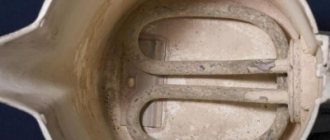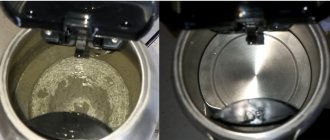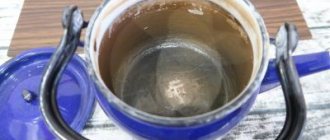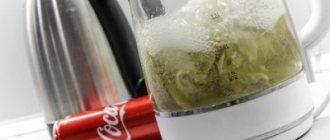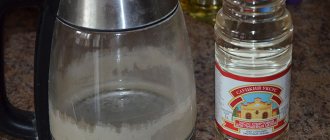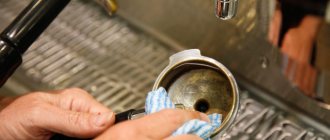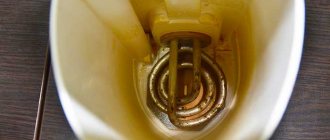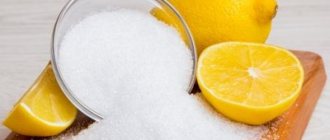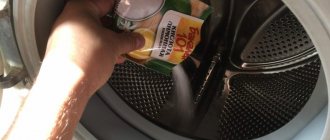Gardening » Citrus » Lemon
1
1012
Article rating
Kira Stoletova
Home appliances and appliances last for many years if their owners take care of their condition. An important step for kitchen and bathroom assistants is to clean them regularly. Home remedies are often used for this, among which the most popular and versatile is citric acid.
Cleaning household items with citric acid
Features of citric acid
Citric acid is characterized by a rich chemical composition. It has many components that begin to actively react to the environment under certain conditions. It is a crystalline powdery substance of bright white color with a specific citrus aroma and a pronounced sour taste. More often in the food industry, citric acid is used in baking, cooking, canning, and in other areas. For house cleaning, monohydrate is used to clean household appliances, plumbing fixtures, carpet cleaning, etc.
This substance reacts actively with hot water when mixed with soda. It is able to fight limescale, dissolving it and crushing particles embedded in materials. But if you use a solution with too hot water over a long period of time, it can damage plastic parts and soft metal parts, corroding their top layer. It is also used to remove greasy stains, taking advantage of its ability to break down fat molecules and remove them from surfaces. The product is often used in combination with soda and vinegar.
Cleaning devices and internal parts of equipment with monohydrate should be safe for the skin of your hands. Therefore, it is mandatory to use rubber gloves.
Safe folk remedies
Other effective folk methods can also actively fight against scale:
- Using citric acid and vinegar,
- Using table vinegar,
- Soda mixture
- And even carbonated drinks (Coca-Cola or Fanta) can help.
Note! The first method will help you cope with even a one-year-old plaque. It is enough just to use table vinegar (1-2 tablespoons) with citric acid and boil thoroughly.
The second method is with table vinegar:
- A solution is made from 1 liter of water and 100 ml of vinegar, pour it into a kettle, boil it, and then let it sit for about an hour. Cleans metal surfaces very well; with other options, the concentration of the main ingredient should be reduced.
- A nuance will be an unpleasant odor after boiling, which will dissipate fairly quickly.
The soda method uses the following technology:
- The water is filled so that all the scale is covered,
- Add 1-2 tablespoons of soda (you can drink it), depending on the model and volume of the device,
- Bring to a boil. If this is an ordinary kettle, then after boiling the fire should be removed and boiled for half an hour. After boiling, leave the electric kettle and let it stand for about an hour with the lid closed.
- After the allotted time, the water is drained and the kitchen utensils are thoroughly washed.
- Then water is added again and boiled and, as has become customary, the first batch is drained, and the next ones can be used for your own purposes.
- This method can be used to clean enamel and stainless steel.
Cleaning with soda ash
And finally, carbonated drinks. The method has worked well, but only with enameled surfaces. The method is quite simple to use:
- Two thirds of the device is filled with a drink (for example, Coca-Cola),
- Bring to a boil
- Leave for half an hour for the chemical compounds to begin.
- It is allowed to use soft sponges for additional cleaning when the solution has cooled to a comfortable temperature,
- Hard-to-reach places are especially carefully treated and cleaned with an old and soft toothbrush.
Additional Information! If the deposits are too severe, the carbonated boiled drink can be left in the kettle overnight.
Cleaning the washing machine
Systematic cleaning of the washing machine with citric acid will save you from rapid aging of equipment and rapid breakdown. Hard water, which is used when washing clothes, after some time leaves a large amount of salts that settle on the heating element and other important parts of the mechanism. Multilayer scale begins to wear out the machine and the washing process becomes ineffective.
Cleaning steps
To descale your washing machine with citric acid, take the powder itself and a small piece of dry and clean cloth. The process occurs in stages:
- check the drum for the absence of things in it, since citric acid can discolor the fabric by dissolving the paint;
- a machine with a washing capacity of up to 7-8 kg requires 90-100 g of powder, for smaller equipment (up to 4 kg) 50-60 g is enough;
- It is better to pour the monohydrate into the drum and into the powder tray;
- choose the longest possible mode with all the main processes - soaking, spinning, rinsing at a temperature of no more than 60°C;
- at the end of the washing process, check the condition of the drum cuff, where dirt and sediment may be found in the flap, which is wiped with a clean cloth;
- You should then clean the drain filter from any remaining large pieces of scale and dry the powder container.
It is permissible to clean the washing machine with citric acid up to 3 times a year with high water hardness. Softer water does not have such a devastating effect on the machine, so cleaning the washing machine with citric acid in this case is allowed about 2 times a year. The preventive measure is carried out after every 30th wash.
Advantages and Disadvantages of Acid Cleaning
To clean your washing machine with citric acid, buy this common and inexpensive product in any store. Its availability for every budget is a big plus. The beneficial components of the monohydrate act quickly and effectively, which is why it is chosen to combat the most difficult contaminants, which are scale of water salts on the heating element of a washing machine.
Citric acid for the washing machine acts as a conditioner. Deposits on the rubber part of the drum often acquire an unpleasant odor due to the proliferation of bacteria and harmful microorganisms in this place. The substances contained in lemon disinfect the drum cuff and give the entire inside of the machine a pleasant citrus aroma. The used citric acid is harmless to the body. After cleaning, use the washing machine without harming the laundry.
Acid disinfects the machine drum
Citric acid does not cause harm if used in certain doses and at a clearly designated temperature. It is possible to descale the washing machine with citric acid using hot water that does not exceed 60°C. A temperature regime that almost reaches a boil (90°C) together with a large amount of substance often leads to deformation of plastic and rubber parts of the mechanism, since the solution turns out to be caustic and aggressive. Cleaning a washing machine with citric acid in such conditions means dooming it to rapid breakdown.
Why does scale form?
The main reason for the appearance of scale on the walls of heat exchangers of gas boilers is the use of hard lime water. As a rule, the water supplied to the heating system is not well purified and contains calcium and magnesium salts, as well as ferric iron, in dissolved form. When exposed to high temperatures, these impurities crystallize on the walls of the heat exchanger, forming a layer of deposits and rust.
Photo 1: Deposits inside bithermic copper heat exchanger
If the coolant used in the heating system undergoes at least some filtration, then water sometimes enters the DHW circuits of double-circuit boilers and bithermic heat exchangers without any purification. That is why these elements are especially susceptible to scale formation.
Why is scale on the walls of the heat exchanger dangerous? Several factors can be identified in the detrimental effect of deposits on the operation of the heating system as a whole and its individual devices in particular:
Increased gas consumption
The mineral deposits that make up the scale have much lower thermal conductivity compared to the metal from which the heat exchanger is made. Based on this, it will take more energy to warm up the coolant, and therefore the volume of gas burned will increase. Just 1 mm of deposits increases heating costs by 10%.
Heat exchanger overheating
The principle of operation of a gas boiler is that the coolant coming from the return line cools the heat exchanger, removing heat into the heating system. Scale interferes with normal heat exchange and the boiler automation commands to heat more strongly in order to achieve the required temperature in the supply line. Working for a long time at extreme temperatures, the heat exchanger quickly wears out and fails.
Additional load on heating equipment
The formation of scale on the walls of the heat exchanger reduces the effective diameter of the channels and interferes with the normal circulation of the coolant. As a result, the load on the circulation pump increases, which leads to its premature wear and failure.
Photo 2: Scale and rust on the walls of the heating system pipes
The problem of scale formation in gas boilers is quite serious and can hurt the owner’s pocket if it is not eliminated in time.
Return to contents
Cleaning the dishwasher
The dishwasher also has an element that heats the water. Salt scales appear over time on these parts of the mechanism, and grease accumulates inside the dishwasher itself. The properties and effectiveness of citric acid as a home remedy for cleaning this household appliance is highly effective.
To tidy up your dishwasher, you need to do the same as for cleaning a washing machine with citric acid:
- The detergent compartment is filled with one sachet of powder – 25 g;
- the washing mode is activated at maximum water temperature;
- upon completion of cleansing, restart another mode without adding any products - to rinse the machine;
- at the end of the entire process, clean the filter, wipe the entire cabin cavity with a damp, clean cloth, including the seals and door.
How to descale with table vinegar
- Suitable for glass and ceramic teapots, stainless steel kettles, irons and washing machines.
- Proportions : teapots - 100 ml for each liter of water; irons - 1 tablespoon per liter of water; washing machines - 10 ml per kilogram of load.
- Plus : a more aggressive acidic environment removes even a thick layer of scale.
- Cons : may harm rubber and plastic elements of devices, pungent odor.
How to descale a kettle
To clean the kettle, dilute vinegar in water and place on fire. After boiling, let it simmer for a few more minutes. Then drain the water, remove any remaining deposits with a sponge and cleaning agent, and boil clean water in a kettle.
How to descale your iron
Pour the warm vinegar solution into the water reservoir and, holding the iron horizontally, release the steam.
Boil a kettle of vinegar and release steam from the iron only in a well-ventilated area.
How to descale your washing machine
In the washing machine, pour vinegar (10 ml per kilogram of load) into the cuvette for conditioner or liquid powder. Run the wash without laundry at maximum temperature, and then rinse again to be sure to get rid of the specific aroma.
Vinegar can damage the rubber bands on the door, so be careful if you decide to pour the product directly into the drum. This can be done when there are no liquid reservoirs in the machine.
Microwave cleaning
The use of this table additive as a solvent for greasy stains inside the microwave oven is also popular. To do this, take powder or cut citrus fruits - this makes it easier to release chemically active elements. They use citric acid to wash the machine for heating and cooking food, with some differences from previous methods.
Internal cleaning rules
One sachet of powder (25 g) is diluted with a glass of cold water and placed in a heat-resistant container. It is important that the solution occupies no more than half the container, otherwise it will spill and fall on the elements of the device. The dishes are placed in the microwave and the appropriate mode is set, in which it will be possible to boil the product for 5 minutes without stopping. Steam, saturated with citrus enzymes, will dissolve fatty deposits on the walls of the device. If necessary, in case of heavy contamination, repeat the procedure.
After the program ends, the door is not opened, leaving the inside exposed to steam. While the oven is cooling down and the fat is steaming inside it, it is better to disconnect it from the electrical network. After complete cooling, wipe the chamber with a sponge and foamed detergent. It is better to have enough foam to remove greasy stains. The washed oven is wiped dry at the end with paper towels to get rid of stains and remaining dirt.
External cleaning of the microwave
The surface of the microwave oven is also often contaminated with drops of fat and food. Lemon juice from a fruit cut in half will come to the rescue. Another effective method is to wipe the outer casing with specially prepared water (a weak solution of citric acid, into which you can add 1 teaspoon of soda for greater effect). The solution is left for an hour so that it has time to dissolve the fat and act effectively against dirt.
Wash off any remaining solution and grease using a sponge soaked in detergent. Then the surfaces are wiped with clean water and wiped dry with paper napkins. After the process is complete, a subtle citrus aroma will remain.
How to clean scale with brine
- Suitable for any teapots.
- Proportions : the kettle must be filled ¾ full.
- Pros : simplicity, accessibility.
- Cons : does not cope with persistent plaque, specific smell.
The brine contains lactic and acetic acids. Fill the kettle with strained cucumber or tomato brine and boil for 20–30 minutes.
After this, drain the brine and scale and wash the kettle with a soft sponge and cleaning agent.
Cleaning the kettle and coffee maker from scale
Citric acid is safe for humans
When boiling hard water, limescale deposits on the walls of the kettle. To get rid of this problem, pour 5 tablespoons into the cavity of the device. food monohydrate, pour warm water up to the sediment level and leave for several hours. Next, rinse the electric kettle with running water. If you start to boil the reagent, the consequences can be disastrous - the coating of the kettle will deteriorate. The acid itself is safe for humans, so after cleaning, simply boiling clean water will be sufficient.
The coffee maker is also susceptible to salt precipitation from hard water during boiling. Therefore, to clean it, pour a solution of 1 tsp into the water compartment. acids with liquid. Next, start the normal coffee brewing process, allowing water to flow through the coffee holes. Then boil clean water for rinsing. Caring for your coffee maker includes regular cleaning every 2-3 months.
Prevention
The use of citric acid is indicated not only for cleaning dishes, but also for preventive purposes. Regular washing of the kettle “saves” from radical methods with vinegar and soda, helps maintain the integrity of the coatings on the walls and bottom, and ensures a long service life of the device.
It is enough to fill the kettle with water with dissolved citric acid powder 1-2 times a month, keeping the mixture for about 30-40 minutes.
The following preventive measures will help prevent scale formation:
- use only filtered or bottled water;
- regularly rinsing the kettle after boiling;
- removing light plaque from the walls.
It is advisable not to leave water in the kettle, drain the liquid completely, and before use it is recommended to pour a new one each time.
Plumbing cleaning
Unpleasant white deposits on shiny plumbing fixtures and surfaces and lime deposits in taps and mixers are a significant problem for housewives. You can get rid of it using various solvents, but the safest and most effective among home remedies is food monohydrate. It is used in a similar way as for kitchen appliances:
- To clean the taps, prepare a solution, the ratio of the components is 2 tbsp. for 1 glass of water. Soak paper towels or cotton cloth with it, wrap the material over the entire length of the faucet and leave for 2-3 hours. Afterwards, wipe with a sponge and detergent; for particularly dirty areas, use a small brush and rinse with cool water. To get rid of lime deposits inside the taps, tie a bag filled with lemon water to it, immersing the spouts in the solution. After a few hours, the inside is cleaned with a brush.
- A shower nozzle clogged with sediment can also be cleaned with a solution of citric acid in water at a concentration of 1:1. Dip the shower head into a container with this liquid for 2-3 hours, then rinse with running water. Often a large number of bacteria accumulate in the sprinkler, so it is better to carry out this procedure every 6 months.
- The toilet bowl is cleaned with a concentrated solution of citric acid. Leave the liquid over the entire surface; place paper towels with the solution in the most contaminated areas. After a few hours, the toilet is cleaned with a brush, adding soda for greater effectiveness.
- We clean tiles, shower stalls, and bathtubs. Their processing includes the use of monohydrate, diluted with water in proportions of 3 tbsp. for 1 l. water. For convenience, the solution is poured into a container with a spray bottle, sometimes adding 1 tsp. baking soda. Wipe surfaces with a sponge.
Cleaning Tools
You can descale the kettle using citric acid either on your own at home or with a specialist for more serious issues.
Process step by step
The instructions are as follows:
- Take 2-3 sachets of citric acid, 30 g each. (depending on how dirty the flask is).
- Add enough water to completely cover the area damaged by scale.
- Pour the contents of the sachets into a container and bring to a boil. The acid granules should dissolve well in the water, and the kettle itself should stand for 5 minutes. After this time, the water usually becomes cloudy due to exfoliated scale. If it has not completely left the walls or bottom, then let the device stand.
- When the plaque has completely disappeared, the water is drained, and the kettle itself is thoroughly washed with water. After the next boiling, the batch is drained, and the next one can be used for its intended purpose.
Note! If the layer is not thick and has only recently begun to appear, the kettle does not need to be boiled. You can fill it with the solution and let it sit for several hours. Afterwards, drain the contents, rinse well, boil and drain the first water after boiling.
Alternatively, you can take a lemon for such an event. Several slices of citrus are placed in a teapot, filled with water and boiled several times. The method is very good for:
- Of stainless steel;
- Ceramics;
- Glass;
- Plastic;
- Enamels.
Important! Do not use detergents or any abrasives for cleaning. In the first case, subsequent boiled water will be harmful to health, since the water will contain chemicals from the product. In the second: hard sponges, scrapers or metal mesh will damage the inner layer or heating element - and the device will be hopelessly damaged.
It is worth remembering that citric acid is poured exclusively into cold or warm water. In hot water, it begins to foam a lot, which can interfere with the successful cleansing process.
Cleaning the car cooling system
It is recommended to clean the car engine cooling system before each antifreeze change. This action gets rid of unwanted dirt, dust, and deposits from the cooling channels and surfaces of other parts; this is an excellent prevention of corrosion (this includes rust).
Citric acid is an ideal safe cleaner because it does not harm the skin or respiratory tract, and when used correctly, does not harm parts made of materials such as plastic, rubber, or soft metal. It is safe to clean a radiator made of any material to control its heating.
For cleansing, using 70-80 g of powder per 5 liters is sufficient. water. But in case of severe contamination, you will have to repeat the action several times.
Tips for cleaning your car's cooling system:
- use only distilled or cooled boiling water;
- First, the monohydrate is poured into a saucepan with ½ liter of liquid, boiled until completely dissolved, then the rest of the water is added;
- after removing the antifreeze, pour flushing into the heat exchanger, start the engine and warm it up to operating condition for 10-15 minutes;
- after turning off the engine, drain the cleaning solution and evaluate its color and consistency;
- The cleaning ends if the solution comes out clean, all that remains is to rinse with distilled water another 2-4 times.
How to clean scale with soda
- Suitable for any teapots, coffee machines.
- Proportions : teapots and coffee machines - 1 tablespoon for every 500 ml of water.
- Pros : accessibility, simplicity.
- Cons : does not remove all types of plaque, does not cope with old deposits.
The mechanism for cleaning teapots and coffee makers with soda is simple: fill them with water, add soda and boil. In this case, it is recommended not to remove a regular kettle from the heat for another 20–30 minutes after boiling, and to turn on an electric kettle several times.
After the procedure, wash the inside of the kettle or coffee machine reservoir and boil clean water.
If the plaque is very strong, try a more alkaline soda ash instead of baking soda. Or add the same amount of salt to regular soda.
Recommendations and tips
Finally, we have prepared a few more useful tips that will help you keep your kettle in perfect condition:
- If there is no citric acid in the house, then it is quite easy to replace it with regular citrus fruit. You can squeeze the juice from one lemon, or you can simply cut it into small pieces and use it in the methods for getting rid of plaque that were described above.
- In some cases, for example, for cleaning an iron kettle, ordinary baking soda is quite suitable, as it can also cope with severe stains.
- If you decide to use a mixture of citric acid and baking soda, but these powders are not in the house, then this is not a problem. They can be safely replaced with regular baking powder or baking powder. Their wonderful composition, which helps baked goods become more fluffy, already contains both soda and acid.
- Fans of carbonated drinks, particularly lemonade, can use them as cleansers. You just need to pour the lemonade into a container and leave it there for two or three hours. Leave the lid open to allow all the gas to escape. Then you need to boil the drink in your favorite kettle and that’s it. The result will be pleasantly surprising. Try to use clear drinks, otherwise you risk staining the inside of the glassware a toxic color.
- It will become easier to care for heat-resistant glassware if you wipe it twice a month with a slice of lemon on all sides: outside and inside. By the way, if you don’t have citrus at home, you can take the powder with lemon and dilute it in water. It is better to clean the contaminated surface with a soft sponge or sponge, moistening them in the solution.
- The following product copes well with dark soot stains and smudges on metal products. Lemon juice and rubbing alcohol should be mixed in equal proportions, then apply the resulting mixture to the stains using a cotton pad and wipe the surface thoroughly. After half an hour, you can wash everything off. If the result is unsatisfactory, the whole process should be repeated.
To learn how to easily descale a kettle, watch the following video.
Whiten and remove stains
Citric acid will also help in the fight against stubborn stains, such as coffee or wine.
Lemon is mixed with soda in a 1:2 ratio and the mixture is applied to the stain. Then adding a few drops of water will cause the ingredients to react with each other, causing the mixture to bubble. Wait some time (5-10 minutes) and brush off the remaining mixture with a brush.
Citric acid can be used to bleach clothes when washing. To do this, dissolve three tablespoons of the substance in a liter of hot water and soak the laundry overnight. Then do normal washing.
To fix the color and disinfect, new colored items are soaked in cold water with acid (30 g of lemon powder per half liter of water).
What does lemons have to do with it?
Citric acid is a natural preservative and antioxidant that is widely used in the food industry. On the labels of juices, jams, sweets and cakes you can find it under the code E330.
The citric acid sold in stores is food grade and has been thoroughly purified. It is a white crystalline powder without a pungent odor. For industrial purposes, technical citric acid is used: in its basic properties it does not differ from food grade, but undergoes less intensive purification. For example, it is added to concrete and gypsum mixtures to slow down their hardening.
Initially, the acid was obtained from the juice of unripe lemons, because it is in citrus fruits that its concentration is highest - up to 9%. For example, 100 g of lemon contains approximately 5.5 g of acid, and 100 g of lime contains 7 g of acid. Hence the name. In addition to lemons, acid is found in black currants and gooseberries, pineapples, strawberries and apples.
It is very beneficial for the body: strengthens the walls of blood vessels, regulates glucose levels, improves digestion, supports the immune system, has a beneficial effect on the condition of the skin and hair, improves energy exchange and metabolism.
Watering the plants
Some plants like acidic soil. You can increase the acidity of the soil by watering with acidified water. The solution is prepared at the rate of half a teaspoon of citric acid per liter of water. The frequency of watering with lemon water is once a month.
Acidic soils are suitable for indoor asparagus, aloe, dracaena, passionflower, and pachira.
On the site, soil acidification will be welcomed by:
- nasturtiums;
- peonies;
- sunflowers;
- roses;
- garden poppy.
Cut flowers - roses or chrysanthemums - will stay in a vase longer than usual if you add citric acid and sugar to the water. The proportions of the solution are as follows:
- one liter of water;
- 35 g sugar;
- 0.2 g citric acid.

